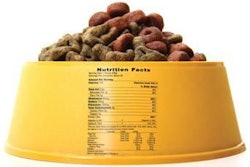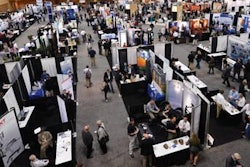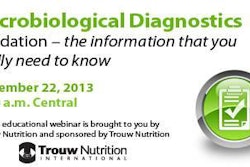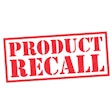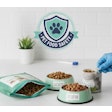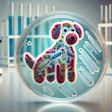Report from the National Research Council on the Safety of Dietary Supplements for Horses, Dogs and Cats - Comments from the NASC President
To assist in making decisions about the safety of dietary
supplements for horses, dogs and cats, the Food and Drug
Administration's Center for Veterinary Medicine (FDACVM)
requested the National Research Council of the National
Academies to produce a report on the safety of supplements. A
committee of experts was established and charged with two main
goals: review factors that should be considered when evaluating
the safety of any animal dietary supplement, and secondly,
assess the safety of three specific ingredients (lutein,
evening primrose oil and garlic) for horses, dogs and cats. The
committee addressed safety only; efficacy or utility of animal
dietary supplements was not part its task. The full report will
be available next month; however, a 4-page report brief and an
executive summary prepared by the National Research Council
based on the committee's full report are now available.
Key Observations from the Committee on
Examining the Safety of Dietary Supplements for Horses, Dogs,
and Cats
• Many people presume that supplements are safer than drugs and
there are very limited safety data on supplements for horses,
dogs and cats.
• The committee was unable to determine the upper safe level of
use for the three ingredients lutein, evening primrose oil and
garlic due to the insufficient safety data currently available.
Because most ingredients in animal dietary supplements are not
proprietary substances, it is unlikely that the amount of
adequate target data will ever be sufficient for safety
assessment.
• An adverse event reporting system is badly needed.
• Regulations addressing animal dietary supplements are in
disarray.
As president of NASC, I would like to take this opportunity to
comment on the committee's findings and recommendations. I am
very familiar with this committee's examination of the safety
of lutein, evening primrose oil and garlic. While not a
committee member, I was asked to make presentations to the
committee and submit information regarding the objectives
commissioned by CVM. In addition, I also reviewed the
committee's findings and provided comments along with 11 others
with expertise in this area.
While I believe that certain conclusions of the committee are
technically correct with respect to safety under the current
system of evaluation and approval for feed ingredients, animal
owners who use these products, as well as businesses who sell
them, should realize this is a complex issue.
Oversimplification in the report brief provided by National
Research Council may cause undue and unfair concern. Readers of
the report brief or subsequent published articles based only on
this 4-page overview may have the impression that the animal
supplement industry has not made an effort to monitor product
quality, safety and risk, or establish a system of responsible
conduct. The majority of the industry are members of NASC and
those familiar with our organization know this is an inaccurate
portrayal.
NASC was established in 2002 because current laws were
developed prior to the widespread use of animal "supplements".
Most stakeholders agree that applying drug laws or feed laws to
animal supplements under existing regulations simply does not
work. Human dietary supplements faced this same issue until
Congress created a specific legal category for them with the
passage of the Dietary Supplement Health Education Act in 1994.
NASC's mission is to work constructively and cooperatively with
state and federal regulatory agencies to ensure that animal
owners continue to have access to these important products,
while creating rigorous systems to ensure quality and risk
management for products and ingredients. In 2003, NASC
established the NASC Adverse Event Reporting System (NAERS)
that
is available to FDA-CVM.
NAERS works effectively when issues arise as demonstrated by
the discovery of melamine contamination in pet food last year.
Through NAERS, we proactively searched the entire database for
any NASC members' products containing grain-based proteins such
as wheat gluten, one of the ingredients found to be
contaminated with melamine. Within one day, we alerted
companies with potentially affected products and FDA-CVM as to
our findings. Fortunately, sources of grain-based protein
contaminated with melamine were not used by NASC members.
NASC continuously tracks more than 6,000 products for adverse
events that might indicate a safety issue. Monthly reporting of
adverse events is mandatory for NASC members. More than 100
companies representing over 90% of the animal supplement
industry now belong to NASC.
Our database of product usage contains 21 billion bytes
of data for over 850 ingredients.
From collective NAERS data, we have
0.31 Adverse Events Reported / million administrations
of all products sold by NASC members
, an extremely low incidence. These data are even more
significant when considering
NASC's broad definition of an Adverse Event:
"a complaint for a product linked to any negative physical
effect or health problem that may be connected to or associated
with use of the product."
This means that even transient events like vomiting, diarrhea
and lethargy would be reported, recorded and evaluated.
Reporting an adverse event does not mean that it was
necessarily associated with use of the members' product; the
broad definition was developed with input from FDA-CVM.
NAERS also tracks Serious Adverse Events
, defined as
"an adverse event with a transient incapacitating effect
(i.e., rendering the animal unable to function normally for
even a short period of time, such as a seizure) or a
non-transient (i.e., long-term or permanent) health effect.
Transient vomiting or diarrhea does not constitute a serious
adverse event. A purported serious adverse event requires
follow-up with a veterinarian. A diagnosis by a lay person does
not constitute a serious adverse event."
From collective NAERS data, we have
0.001 Serious Adverse Events / million administrations
of all products sold by NASC members
. Again, this does not necessarily indicate that the adverse
event was due to the use of the product, only that it occurred
when the product was used.
We introduced the NASC Quality Seal as an additional indicator
to consumers that products bearing the seal are being monitored
through NAERS which has been verified by an independent quality
audit. This level of rigor and oversight far exceeds what is
required for human supplements, helping to ensure that the
animal supplement industry is conducting itself responsibly and
pursuing objectives that are in the best interests of all
stakeholders. Just a few highlights of the many accomplishments
achieved by NASC:
• Established NAERS to continuously track, trend, and assess
adverse events associated with either products or ingredients
beginning in August 2003. NASC received high praise for NAERS
during the petfood recalls in 2007.
• Developed and implemented current Good Manufacturing
Practices (cGMPs) for our industry in July 2004 with several
major revisions.
• Established an independent Scientific Advisory Committee
providing oversight for ingredients. This committee submitted
risk stratification recommendations to FDA-CVM for over 850
ingredients found in our members' products.
• Developed product labeling and claims guidelines.
• Established an independent quality audit verification program
for member companies.
While the scientific skills and qualifications of the committee
participants are excellent, unfortunately the committee
included no one from the industry that actually participates in
purveying these types of products to the marketplace for dogs,
cats or horses. The Association of American Feed Control
Officials (AAFCO), beginning as early as 1998, established five
different committees in an attempt to address similar issues;
all were disbanded without reaching viable options for a
solution. While I agree that the conclusions of the National
Academies study may be accurate on a very broad application, I
feel it unfairly represents the conduct of the majority of the
industry and what has been done to ensure animal owners have
confidence in the products they receive from NASC Member
Companies.


